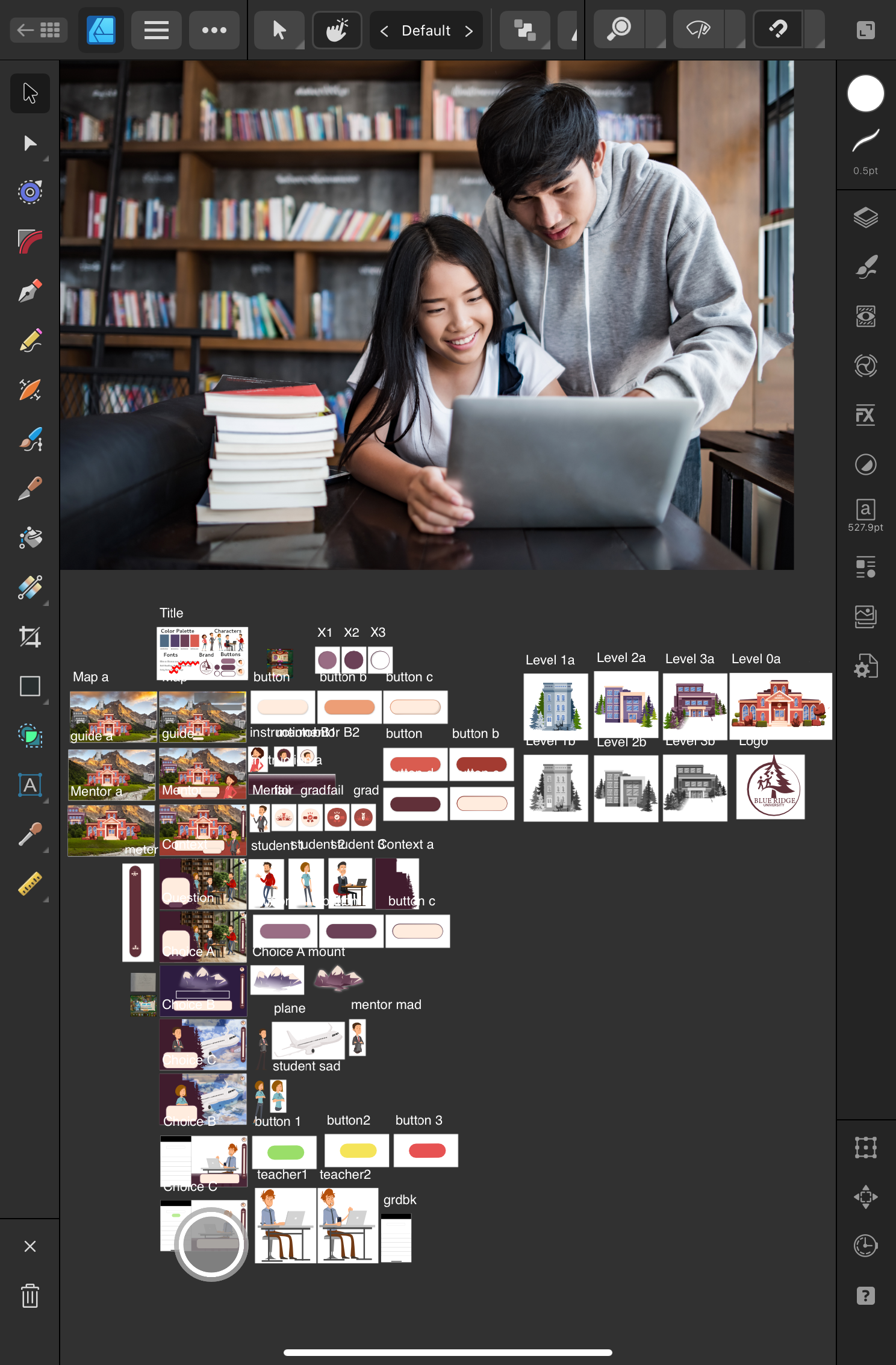Moderated Technology
Audience: Senior college or high school students from Southeast Asia studying abroad for at least a year. They came in with credits for their STEM program and language courses and an average IELTs score of at least 6 points.
Responsibilities: eLearning development, action mapping, storyboarding, graphic design, and visual mockups.
Tools Used: Articulate Storyline 360, Mindmeister, Microsoft Word, Affinity Designer 2, Adobe Stock, Pexels, and Pixabay.
Problem
Blue Ridge university is a conceptual institution dedicated to fostering a relationship with Southeast Asian schools abroad while holding them to the same high standards they expect of students in their country. In recent years faculty and staff have noticed how students from Southeast Asia have flunked out at increasing rates over several semesters. Department heads are seeking external aid to address the problem before students pursue an experience that could damage their career prospects personally and their relationship to other institutions globally.
Solution
Upon a short analysis, I realized that one of the major problems was grounded in technology reliance. With the ubiquitous use of technology in Southeast Asia, students have come to fully rely on technology to perform on assignments or in-class presentations. Conversely, with no previous exposure to the educational technology used in Universities, students fail to engage with the key programs they need to succeed. To help them in reduce their reliance on AI and other popular apps while building a habit for interaction on target platforms, I proposed an immersive, scenario-based e-learning experience. This course simulates the same circumstances students face daily while providing them with the mentorship and consequences they need to exercise better judgement.
Process
After the idea was fully written and edited, I constructed a more detailed storyboard in Microsoft Word. I started by laying down the prompt for each scene, then drafted out a rough idea of what each interaction brought to mind within a multi-level game context I already decided upon at the beginning of this project. With the outline in place, I found inspiration through Pinterest and Adobe stock and balanced the storyboard, references, and assets to build my own gaming mockups through Affinity Designer 2. When I was content with the overall look of the first scene (from the title slide to the consequences of question 1) I uploaded each piece into Articulate storyline 360.
I brainstorm possible causes for the problem and highlight 3-4 habits in Mindmeister.
I build the script, visuals, and programming in storyboard through Microsoft Word.
I define the Fonts, color, logo and buttons into a study guide on Affinity Designer 2.
Full Development
I built the simulation out with a more “top-down” method- arranging all the elements, routing the slides in a target order, and then animating the interactivity of elements on each slide.
Video reviewed and commented on for feedback in Review 360
Feedback
Take practical steps- During my analysis I realized there were many different angles and overlying arguments that characterized this problem. I realized that, like a diagnosis, I needed to find the most reasonable explanation for the symptoms to clarify the root cause. So, to simplify it, I chose the practical approach of technology not for its ability to wholistically solve the problem (for attitude, motivation, and short-sightedness were still major contributors) but for its focused action and far-reaching impact. Happily, users with a similar perspective found this eLearning experience constructive and enjoyable:
“I can say that everything seems really well done and works great. As someone who was an international student in the U.S. and struggled with English, I can relate so much to your work. I can’t wait to see the next part of your project!”
- Ewa Kwiatkowski, Instructional Designer in Training
Visual management before manipulation- Cohesiveness is an important principle in visual design that keeps the audience invested in the “reality” they are participating in. Though building mockups is the phase I enjoy the most, the process of collecting, matching, and altering visuals to fit targeted contexts has been the most time consuming in my experience. However, by setting personal search limits, accepting more of what assets offer, and manipulating content only to fill in the gaps, I learned how to be more efficient and satisfied with my work.







